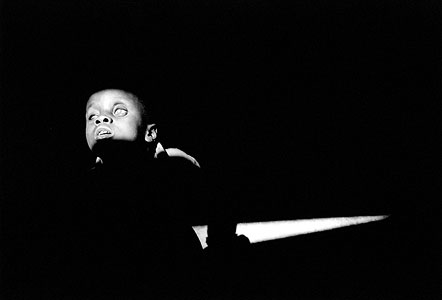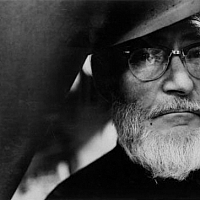
La bourse W. Eugene Smith est ouverte aux photographes professionnels. Dépôt des dossiers le 3 juin (15 à 20 photos d'un projet de documentaire engagé). Site Web : http/ www.smithfund.org/
La Bourse W. Eugene Smith : Lorsque Eugene Smith mourut à l'âge de 59 ans en 1978, il avait 18 dollars en banque. Pourtant, son nom était devenu synonyme d'intégrité. Son dernier reportage, réalisé avec sa femme Aileen, concernait les victimes de la pollution chimique à Minamata, au Japon. Eugene Smith fut d'abord connu pour sa couverture de la guerre dans le Pacifique. Il devint ensuite le pionnier de "I'essai photographique" pour le magazine Life avec lequel il collabora jusqu'en 1954. Ses essais photographiques les plus connus sont: « Le médecin de campagne (country doctor), la sage- femme (nurse Midwife), le village espagnol (spanish village). Pourquoi un fonds commémoratif en son nom? Ceux qui ont connu Smith savent qu'il avait eu besoin d'amis à des moments critiques de sa vie.Aujourd'hui, de nombreux photographes résistent aux modes et aux aspects lucratifs de l'édition moderne. La fondation W. Eugene Smith a donc été créée en 1979 par Howard Chapnick, Jim Hughes et John Morris pour découvrir et encourager ces voix indépendantes. Au cours de ses dix huit années d'existence, cent quatre vingt trois photographes ont été finalistes parmi plusieurs milliers de candidats qui cherchaient une aide pour achever des projets importants. Chacun de ces finalistes méritait une subvention. Un lauréat doit, d'une manière ou d'une autre, approcher le niveau d'exigence de Gene Smith. « Je suis un cynique compatissant, écrivait-il, et pourtant je crois être l'un des photographes qui s'affirme le plus. J'ai essayé de faire de la vérité mon parti pris. Cela m'a pris beaucoup, mais cela en valait la peine. »
Liste des lauréats depuis la création du prix : 1980 Jane Evelyn Atwood, 1981 Eugene Richards, 1982Sebastiao Salgado, 1983 Milton Rogovin, 1984Gilles Peress, 1985 - Donna Ferrato et Letizia Battaglia, 1986John Vink, 1987 Graciela Iturbide, 1988 Paul Graham, 1989Cristina Garcia Rodero, 1990 Carl De Keyzer, 1991 Dario Mitidieri, 1992Eli Reed, 1993James Nachtwey et Marc Asnin, 1994 Ellen Binder, 1995Vladimir Syomin, 1996 Gideon Mendel, 1997 Alain Keler,1998 Ernesto Bazan ,1999 Chien Chi Chang ,2000 Brenda Ann Kenneally, 2001Maya Goded, 2002 KaiWiehedenhöfer, 2003 Trent Park ,2004 Stanley Greene, 2005 Pep Bonet, 2006 Paolo Pellegrin.
W. Eugene Smith's photographs reflect his boyhood in the American heartland and his coming of age in the agony of World War II. His work, imbued with moral fervor, evinces a clear difference between good and evil, the individual's ability to transcend his or her circumstances, the inherent goodness (even heroism) in people, the capacity and willingness of one person to help others (such as the healers in country doctor, nurse-midwife and Albert Schweitzer). In the photo essays which he did after World War II, he demonstrated a belief in the human spirit and the ability of humanity to rise above the immense destruction it had sown. Like the country which he came from and the magazine, LIFE, which hired him, Smith's work was refreshingly direct, sometimes sentimental and often optimistic. The credos of those who have been awarded the W. Eugene Smith Grant in Humanistic Photography are generally more sober, less drawn to epiphany. Few seem to agree with Smith that the meek shall inherit the earth; none seem capable of taking an image as sweetly, optimistically romantic as "The Walk Through Paradise Garden." Whether in a hospital emergency room, or mired in the conflicts of Belfast or Palermo, hardly any of the individuals depicted by the Grant recipients seem to be able to provide profound healing and resolution. Problems seem more endemic, more difficult to change.... The intention of this Grant has never been to find photographers who replicate Smith's particular preoccupations or his photographic style. It has been, and continues to be, to find worthy recipients who in their own way will explore and report upon aspects of the contemporary world that are of significant importance. The Grant is given to allow photographers to escape from the increasingly formulaic demands of the mass media. The photography, as it should, will evolve.
By Fred Ritchin W. Eugene Smith: Photographs 1934-1975 ed. Gilles Mora & John P. Hill (Harry N. Abrams, Inc., Publishers, 1998) "The Legacy of W. Eugene Smith" (Camera International no. 6, 1991) W. Eugene Smith: Shadow & Substance Jim Hughes (McGraw-Hill, 1989) Let Truth Be the Prejudice W. Eugene Smith: His Life and Photographs (Aperture, 1985) Master of the Photographic Essay: W. Eugene Smith William S. Johnson (Aperture, 1981) Minamata W. Eugene Smith and Aileen M. Smith (Alskog-Sensorium Book, 1975)

